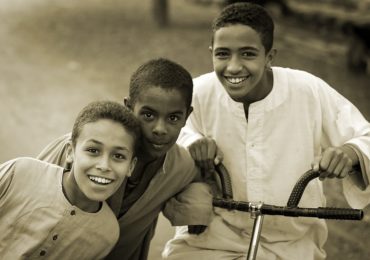“Children are not only our future, they are our present and we need to start taking their voices very seriously.” Carol Bellamy, Executive Director of UNICEF.
There are two points of view on the relationship between children and the urban neighbourhood, whether one considers the position of children in urban public space or the position of this environment in children’s socialization. Leaving aside abstract images of the ideal neighbourhood for children, urban public space should also be considered as a co-educator. But it has much to do with planning. The consequences on children’s lives of not planning for the future are clear. If cities do not address ways of growing in sustainable ways, and provide adequate infrastructure to support population growth, the impact will be the continuance or exacerbation of large-scale poverty and urban slums. It is for these reasons that action based on the principles of sustainable development and children’s rights has been launched by the United Nations. It is, for these facts, with time, the mass participation is often laid stress upon. Promoting the participation of children and young people in decision-making and development and as active contributors to everyday family and community life has become a central part of policy and program initiatives in both majority and minority worlds.

The Nine ‘Building blocks for developing a child friendly city’
The Key components are nine building blocks (Sheridan Bartlett). They act as guidelines to be used by government, and are essential if they are to engage children in authentic participatory processes. They also ensure children’s rights are incorporated into all levels of relevant decision-making forums, particularly in terms of the equitable distribution of basic services. According to ‘Child Friendly Cities: A Framework for Action (UNICEF 2004 A)’, the framework outlines the fact that to make change happen, governments must make political commitments and implement actions on the ground. The Nine ‘Building blocks for developing a child friendly city’ are as follows:
- Children’s participation
- A child friendly legal framework
- A city-wide children’s rights strategy
- A children’s rights unit or coordinating mechanism
- Child impact assessment and evaluation
- A children’s budget
- A regular ‘state of the city’s children’ report
- Making children’s rights known
- Independent advocacy for children
According to UNICEF (2001a) a child friendly city requires basic elements that ensure it is able to fulfil the principles of the Convention on the Rights of the Child. According to Newell, “The aim is to improve the lives of children by recognizing and realizing their rights and hence transform for the better urban societies today and for the future. Building child friendly city is a practical, not theoretical, process which must engage actively with children and their real lives.”

Characteristics of a child friendly city according to the UNICEF report:
- Good access for all children to affordable, quality basic health services, clean water, adequate sanitation and solid waste removal;
- Local authorities to ensure that policies, resources allocations and governance actions are made in a manner that is in the best interests of the children and their constituencies;
- Safe environments and conditions that nurture the development of children with opportunities for recreation, social interaction, psychological development and cultural expression;
- A sustainable future under equitable social and economic conditions, and protection from the effects of environmental hazards and natural disasters;
- Children have the right to participate in making decisions that affect their lives
- Special attention is given to disadvantaged children, such as those who are living or working on the streets, sexually exploited, living with disabilities or without adequate family support;
- Non-discrimination based on gender, ethnic background or social or economic status
The characteristics of child friendly cities further point out need of providing basic rights to children. A Child friendly city is a platform to take forward the agenda of the child rights in both the developing world and the industrialist world. According to the CFCI, “A Child friendly City is a local system of good governance committed to fulfilling children’s rights”. It does this by being actively engaged in fulfilling the right of every young person to:
- Influence decisions about their city
- Express their opinion on the city they want
- Participate in family, community and social life
- Receive basic services such as health care, education and shelter
- Drink safe water and have access to proper sanitation
- Be protected from exploitation, violence and abuse
- Walk safely in the streets on their own
- Meet friends and play
- Have green spaces for plants and animals
- Live in an unpolluted environment
- Participate in cultural and social events
- Be an equal citizen of their city with access to every service, regardless of ethnic origin, religion, income, gender or disability

In practical situation, children’s right can be reflected in policies, plans and everything beyond. In a Child Friendly City, considering an ideal situation, children are the active agents in any form of decision making process. Their voices and opinions are considered and they have the power to influence major decisions which have an ultimate impact on them.